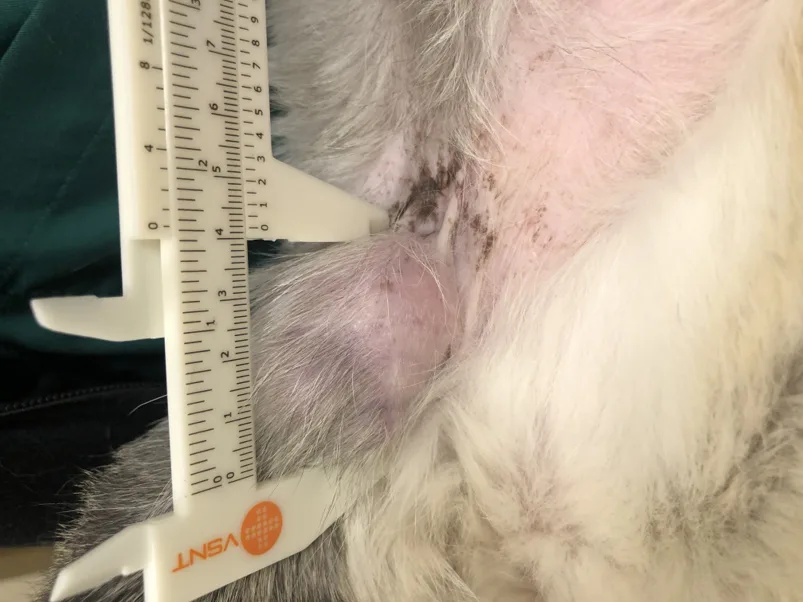Prognostic Factors for Feline Injection Site Sarcoma Recurrence
Kate Vickery, VMD, MS, DACVIM (Oncology), Colorado State University Veterinary Teaching Hospital, Flint Animal Cancer Center, Fort Collins, Colorado
In the literature
Chiti LE, Martano M, Ferrari R, et al. Evaluation of leukocyte counts and neutrophil-to-lymphocyte ratio as predictors of local recurrence of feline injection site sarcoma after curative intent surgery. Vet Comp Oncol. 2020;18(1):105-116.
The Research …
Feline injection site sarcomas are caused by any stimulus that incites chronic local inflammation of the subcutis or muscles.1-4 Treatment of these tumors can be challenging because of their locally invasive properties and subsequent high risk for regrowth after surgery. Multiple variables have been assessed to determine the prognostic significance with regard to local recurrence, and completeness of surgical excision has been shown to be a vital factor in multiple studies.5-8 Unfortunately, even in cases in which histologically tumor-free margins were achieved, local recurrence has been documented.6,7 Thus, tumor recurrence is possible despite complete histologic margins. In humans, pretreatment neutrophil:lymphocyte ratio (NLR) has been shown to be a prognostic indicator in patients with several solid tumors, including soft tissue sarcomas,9 and leukocyte counts and ratios (eg, NLR) have been proposed as prognostic tools in dogs with various tumor types, including soft tissue sarcomas.10
In this retrospective study, several CBC parameters (ie, pretreatment NLR, WBC count, neutrophil count, lymphocyte count) were evaluated for use as prognostic markers for recurrence of feline injection site sarcoma. Eighty-two cats with newly diagnosed, surgically excised injection site sarcomas were included; surgery criteria included wide margin excision, with 3- to 5-cm lateral margins and 2 deep fascial planes, or limb or tail amputation. The impact of NLR and lymphocyte count on overall survival time was assessed as a secondary endpoint.
Cats with ulcerated tumors had significantly higher WBC and neutrophil counts. WBC count, neutrophil count, and NLR were significantly higher in histologically infiltrative injection site sarcomas. NLR was significantly higher in patients with fibrosarcomas and was correlated with tumor size. In univariate and multivariate analysis, NLR, WBC count, and neutrophil count were significant prognostic factors for local recurrence. However, when WBC count, neutrophil count, and NLR were considered together in the Cox regression model, only WBC count remained a prognostic factor for local recurrence. WBC count, neutrophil count, and NLR were not confirmed to be prognostic for overall survival time in the multivariate model.
This study demonstrates that pretreatment NLR, WBC count, and neutrophil count may be of value in identifying cats at higher risk for local recurrence after curative-intent surgery for injection site sarcoma. These parameters are readily available, cost-effective, and objective prognostic tools that can be easily retrieved from routine preoperative hematologic investigations. However, considering the retrospective nature of this study and the low number of included cats, further prospective studies are warranted to confirm these findings.

Injection site sarcoma on the flank fold of a cat. External measurement: longest diameter, 40 mm

CT scan of the same cat with injection site sarcoma, confirming the flank fold tumor is invading the body wall
… The Takeaways
Key pearls to put into practice:
Feline injection site sarcomas are locally invasive tumors with high risk for local recurrence.
WBC count, neutrophil count, and NLR do not appear to be associated with overall survival time in cats with injection site sarcomas that have been treated with curative-intent surgery.